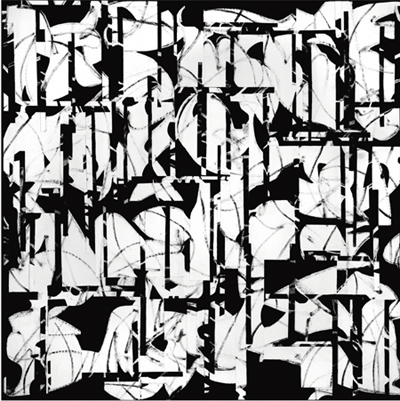
When Judith Foosaner hit a dry spell in her work a few years back, the artist pared down her methods and materials. She wrote "Scared and hopeful, I gave myself a two-part assignment with very strict parameters." These were limiting herself to an exhaustive drawing process, and then allowing herself to re-enter painting using only black. "It was a difficult time, but I clutched the hope that my frustrations would eventually drive me right over the edge and that, falling, I would see something new. It did and I have."
Given the elegance with which Foosaner constructs such statements, it may come as no surprise that her first degree was in English, from UC Berkeley. Her passion for literature, indeed, for language itself, is expressed almost subliminally in the very essence of her paintings. Returning to Berkeley in the '60s to obtain degrees in art was a terrific experience for the artist. As Foosaner explained by phone, from her studio in Sacramento: "Back then the University had money, the art program was one of the best in the nation... Hans Hofmann had come and taught at Berkeley [in the '30s]--his teaching was so strong it formed the basis for the education which continued through my time there, which was really about structure and space, and I took to it like a little duck."
Self-supporting since the age of 18, Foosaner began to teach right out of grad school. She appreciated the time for her work which teaching afforded her, and found that she loved to teach, as well. After a year teaching for the de Young Museum's art education program, she interviewed at what is now CCA, and ended up teaching there for 34 years. Foosaner feels fortunate to have spent so many years "immersed in a climate of visual culture."
Foosaner's work conveys to the viewer both her mastery of her craft, and the sense of sheer joy she experiences in mark-making. "Moving Violations," an exhibition of her work recently on view at Brian Gross' One Post Street, was comprised of a group of large-scale collage and acrylic works on canvas--dramatic, gestural black and white works where linear elements suggest letters from some unknown alphabet, poetry written in a language we can't quite translate. Interstices filled with black give a sense of completion and assurance. These works have a lyricism and elegance, but also an unsettling edge. Through their palette, line quality and energy, they recall Picasso's Guernica, although clearly removed from the politically charged imagery of that work. The work is also rooted in dance. "I see the shapes as characters and their conjunction as choreography," she observes. Foosaner participated in a small South Bay contemporary dance company during the six months or so of its existence; clearly, a meaningful experience for the artist.
Foosaner offers a glimpse into her method, "I'll put up ten or fifteen pieces of paper, and just draw, draw, draw, draw. It's an incredibly ecstatic process... I love to chop them up, I love to glue them on the surface and see what I have... I paint into each square with black, and its interior starts popping out against the black ground." These shapes "can have a number of qualities--boisterous, combative, quiet, any number of things--then I have shapes forming a grid against the black ground over the entire surface of the picture plane. My next step is to deregulate it, and keep it on track--whatever that is." She adds, "I think in movement, shape and line... I could introduce color, I've thought about it, but I actually think it moves away from... whatever I mean. I just don't feel I need color--at least, not right now."
"Moving Violations," an exhibition of works on canvas by Judith Foosaner, could recently be seen at Brian Gross Fine Art at One Post Street, in San Francisco, from April 11-July 1, 2011. www.briangrossfineart.com
This article was written for and published in art ltd. magazine ![]()
